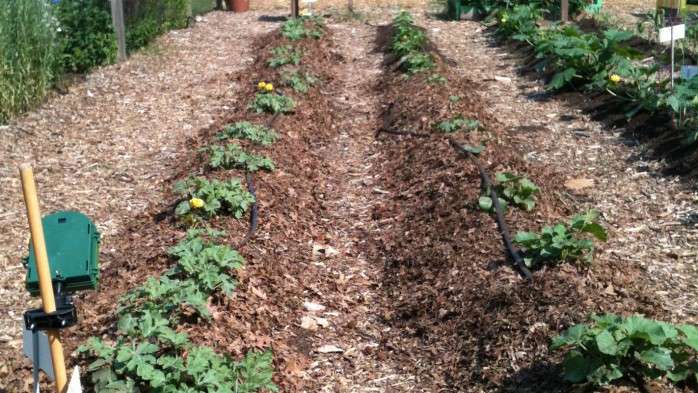Credit: Ashley Chaifetz.
School and community gardens have become increasingly popular in recent years, but the people managing and working in these gardens are often unfamiliar with food safety practices that reduce the risk of foodborne illness. Now researchers have developed guidelines that address how to limit risk in these gardens - and a pilot study shows that the guidelines make a difference.
"People involved with these gardens are passionate about healthy eating, food security and helping people connect to where their food comes from," says Ashley Chaifetz, lead author of a paper describing the work and its effect on school and community gardening practices. "But they often don't have formal training in how to limit exposure to foodborne pathogens. We developed tools to help educate these gardeners, and our research shows that the tools are effective." Chaifetz is currently a Ph.D. student at the University of North Carolina at Chapel Hill, but worked in the lab of NC State associate professor and food safety specialist Ben Chapman at the time of the study.
The project, led by Chapman, was borne out of discussions with public school and park officials who asked for food safety guidelines for school and community gardens. The research team then developed a document that lists food safety risks, gives specific instructions on how to limit those risks, and explains how the risk mitigation efforts work.
For example, gardening involves working with your hands, creating the possibility of transferring pathogens to fresh produce. To limit that risk, people should wash their hands before working in the garden - not just after digging in the dirt. So, gardeners should have access to handwashing facilities (and should use them), in order to wash off any pathogens.
The guidelines also offer garden managers advice on how to share the recommendations with volunteers who work in the garden.
Once the guidelines were complete, the researchers wanted to know how and whether the guidance would influence behavior. To find out, they launched a project with 10 community gardens and 10 school gardens.
The researchers conducted on-site, observation-based assessments of food safety practices at all 20 gardens. They then gave the guidelines and related supplies - such as hand soap - to the garden managers.
Two months later, the researchers went back to the gardens to conduct a follow-up assessment.
Sixteen of the 20 gardens improved their overall scores in terms of their use of best practices.
In particular, the researchers found significant improvement in three areas: handwashing; addressing the safety of the site's water supply; and assessing pre-existing hazards at the site, such as potential soil contamination.
"There's still room for additional improvement in their food safety practices, but it's important to note that we saw real advances in risk reduction simply by providing the guidelines," Chapman says. "We're exploring additional, follow-up measures, such as webinars and YouTube videos, to see if they lead to additional improvements."
The guidance, "A Handbook for Beginning and Veteran Garden Organizers: How to Reduce Food Safety Risks," is freely available online.
The paper, "Implementation of Good Agricultural Practices (GAPs) in School and Community Gardens," was published online April 30 in the journal Food Protection Trends.
Provided by North Carolina State University





















